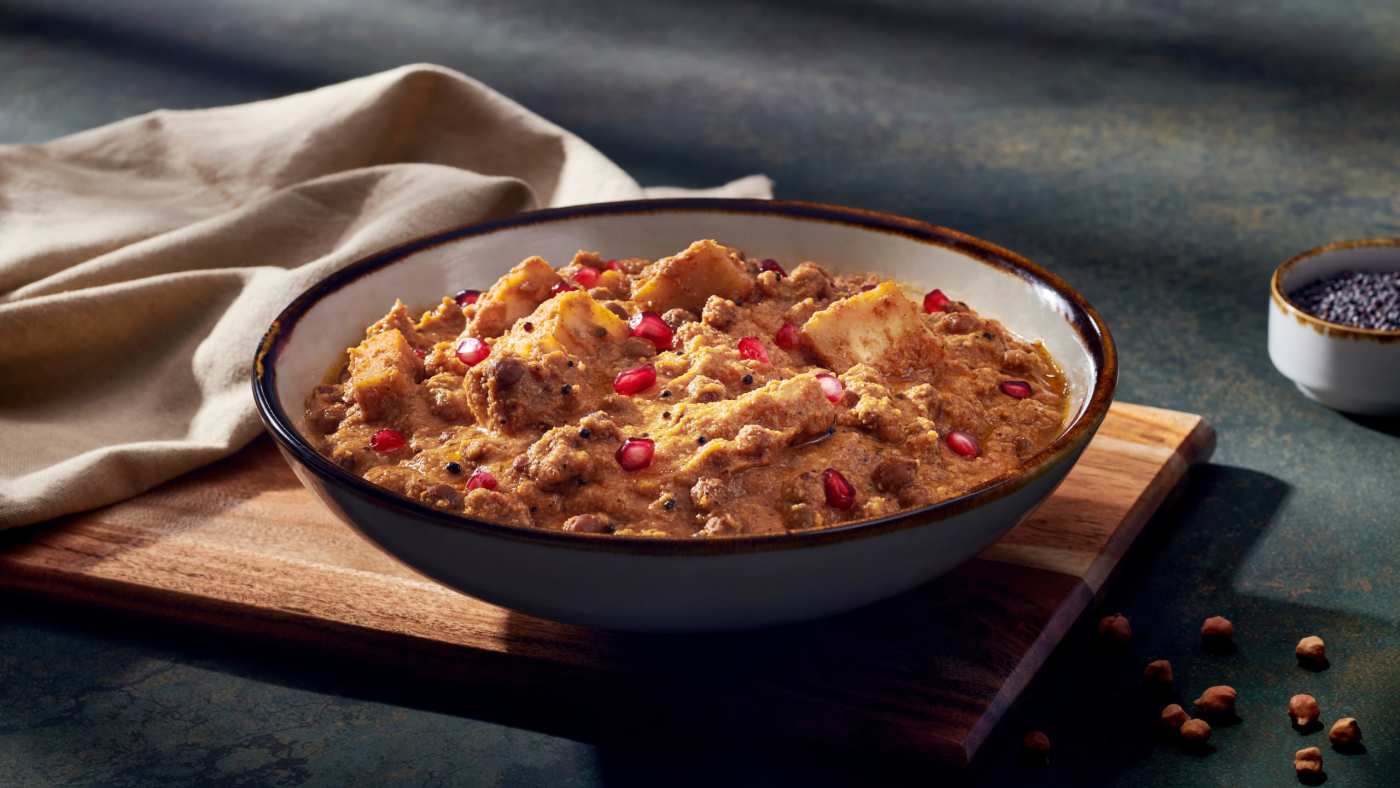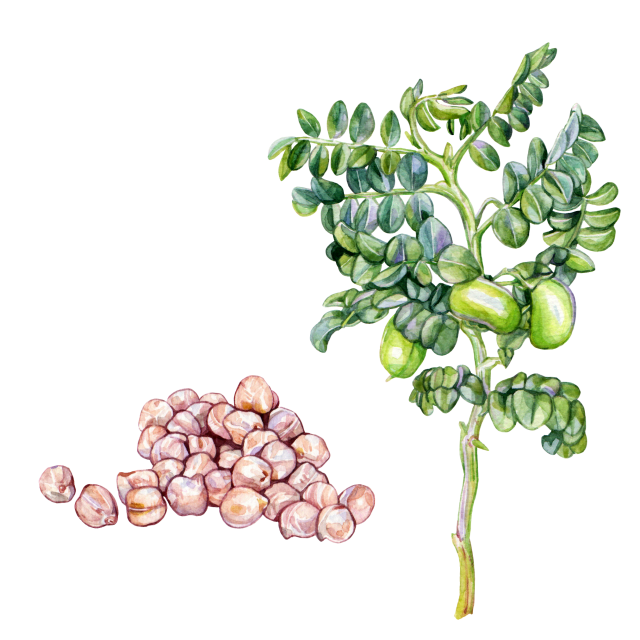
Raw Banana & Black Chickpea Stew

Raw Banana & Black Chickpea Stew
Description
In Ayurveda, Kashaya (astringency) is linked to lightness and mental clarity; it's considered a mood enhancer but may cause dehydration and digestive issues in excess. This recipe plays with the astringency of raw plantains and chickpeas, tempering them with other tastes. Tamarind provides iron and polyphenols, plantains add resistant starch, and black chickpeas offer protein.
Ingredients
4 SERVES
- 1 cup (60 g) grated coconut
- 2 Tbsp (30 g) tamarind paste
- 4 dried Kashmiri red chiles
- 2 Tbsp cold-pressed mustard oil, or neutral cooking oil
- 2 sprigs curry leaves
- 2 tsp black mustard seeds
- ¼ tsp hing (asafetida)
- 2 (400 g) raw banana (plantain), sliced thick
- 2 cups cooked kala chana (black chickpeas), plus water from cooking
- Himalayan pink salt
Directions
-
Step 1
In a blender or using a mortar and pestle, grind the coconut, tamarind and red chiles. Use as little water as possible to make a smooth masala paste. -
Step 2
Heat the oil over medium heat and add the curry leaves and mustard seeds. Once they the seeds start to pop, add the hing, then the raw banana. Stir and cook for 4 to 5 minutes, until the banana turns brown. -
Step 3
Add the masala paste and sautee for 2 to 3 minutes, until the raw tamarind smell mellows. -
Step 4
Add the pre-cooked chickpeas, stir-fry for 2 mins. Add ½ cup of the reserved water from cooking the chickpeas. Cook for 10 minutes on medium high heat, until the flavors are well infused. Taste and add up to 1 tsp salt, as need. Serve hot in a bowl.
About the author
More by Moina Oberoi

Ayurveda Rasas
Learn to cook with the six rasas of Ayurveda through five simple recipes.

Beet Millet Pulao
Sweet doesn’t always mean dessert! In Ayurveda, the madhura rasa (sweet taste) is associated with energy-giving foods, like this millet pulao recipe from Moina Oberoi.

Candy Cane Beet & Carrot Kanji
Kanji is a refreshing, hydrating, probiotic Indian drink, packed with the goodness of carrot and beet. The most important ingredient is the winter sunlight!





